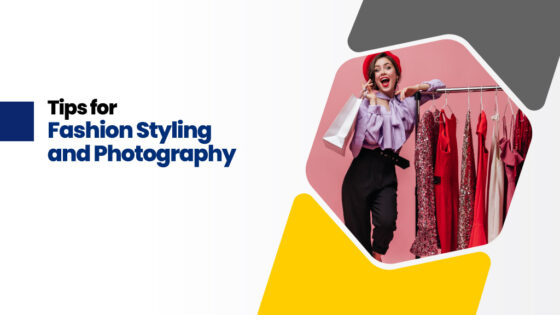Fabrics are the fundamental building blocks of fashion design. The style, feel and usefulness of clothing are all determined by the fabrics used. Knowing many kinds of clothes is essential for designers from the best fashion designing colleges in Tamil Nadu to create designs that are visually beautiful and also to effectively fulfill their intended purpose. From natural fibers to synthetic blends, each fabric has specific characteristics that impact its usefulness for various purposes.
10 Essential Fabric Types
Cotton
Cotton is a popular natural material used in textiles due to its softness and breathability. As it gives comfort and has capacity to absorb moisture, it is a fundamental fabric in fashion design.
Uses
- Cotton is perfect for casual wear like t-shirts and lightweight pants.
- Cotton textiles are also very simple to dye and print which provides countless opportunities for artistic expression.
Silk
Silk is a luxury natural material known for its glossy appearance and draping qualities. To suit a variety of applications and design tastes, silk textiles come in a range of weights and textures. They range from lightweight chiffon to heavier satin.
Uses
- It is a popular option for formal apparel and high-end design pieces since it is frequently connected to elegance and sophistication.
- Designers frequently use silk to give a touch of refinement to their collections by creating flowing dresses and lingerie.
Wool
Wool is a natural fiber that is extracted from the fur of sheep or other animals, like rabbits (angora) and goats (cashmere). It is highly valued for its qualities of retaining the shape of the material and lasting for a longer period. Wool is appropriate for many types of apparels particularly those used in colder areas.
Uses
- Woolen materials are available in a variety of weights and textures such as thick yarns for winter outerwear and fine merino wool for lightweight knits.
- Wool is widely used by designers to combine warmth and classic style in jackets and sweaters.
Polyester
Polyester is a synthetic fabric that is wrinkle-resistant and easy to take care of. It is a common choice for a range of clothing and applications since it is frequently combined with other fibers to improve performance and lower cost. Polyester materials offer increased strength and color retention while simulating the appearance of natural fibers like cotton and silk.
Uses
- Polyester’s cost allows designers from the top 10 fashion designing colleges in Coimbatore to use it for a wide range of products in home textiles.
- It is also used in formal apparel and activewear.
Rayon
Rayon is a semi-synthetic material that is frequently produced from wood pulp and is formed of natural cellulose fibers. The blend of natural fibers’ softness and synthetics’ affordability makes it a popular choice among designers who aim to strike a balance between comfort and functionality.
Uses
- Due to their lightweight and breathability, rayon materials are a good choice for skirts and blouses for warm-weather.
- Additionally, they offer superior drape qualities that let clothing move effortlessly and create flowing shapes.
Denim
Denim is a durable cotton twill fabric with diagonal ribbing and indigo dyeing technique. Denim textiles are suitable for a variety of designs and applications because they are available in a range of weights and finishes, from lightweight denim to heavyweight denim. Through creative cuts and decorations, designers play with denim to create classic pieces with a modern twist.
Uses
- It is frequently connected to casual attire, including skirts, jackets and jeans.
- But it has evolved beyond its practical roots to become an integral component in fashion design.
Linen
Linen is a natural material derived from the flax plant that is known for its breathability and classic look. Because of its airy and lightweight texture, it is frequently worn in warm climates and during summer, which makes it a great option for breezy, casual attire.
Uses
- Linen textiles are known for their natural wrinkles and slightly rough texture, which lend character and charm to clothes like shirts, trousers and dresses.
- Designers value linen for its sustainability and eco-friendliness adding to the growing need for ethical fashion choices.
Spandex
Spandex is a synthetic fiber that is well-known for its remarkable stretch and rebound qualities. It is sometimes referred to as elastane or Lycra. It is frequently combined with other fibers to give clothing more flexibility and comfort.
Uses
- Spandex materials are great for bodycon dresses, swimsuits and athletic performance clothing because they retain their shape and allow freedom to move.
- They are especially used in sportswear and form-fitting clothing.
Velvet
Velvet is a rich fabric known for its soft and fluffy texture. It has a long and rich history that dates back to centuries. It is often linked to high fashion and royalty.
Uses
- Velvet materials are frequently used for upholstery and formal clothing, giving every ensemble a dash of refinement and glitz.
- Designers make use of velvet’s luxurious feel and classic appeal by using fabric in accessories and home decor.
Tulle
Tulle is a thin, lightweight netting material that is frequently used because of its delicate look and airy texture. Tulle materials are suitable for a range of design ideas and decorations because they are available in a multitude of colors and finishes, such as plain, sparkly and embroidered.
Uses
- Tulle is used by designers to add layers, overlays and ornamental elements that give their works an air of romanticism and ethereal beauty.
- It adds volume and whimsy appearance to clothing and is frequently linked to formal gowns and bridal apparel.
B Des Fashion Design Colleges in Coimbatore equip students with the properties and applications of diverse fabric types to produce clothing that fulfills the functional needs of the customers. Every type of fabric, from synthetic blends to natural fibers has special qualities and opportunities for artistic expression. In the dynamic field of fashion design, designers can release their creativity confidently and they can precisely realize their ambitions by becoming experts in these fundamental fabric kinds.






